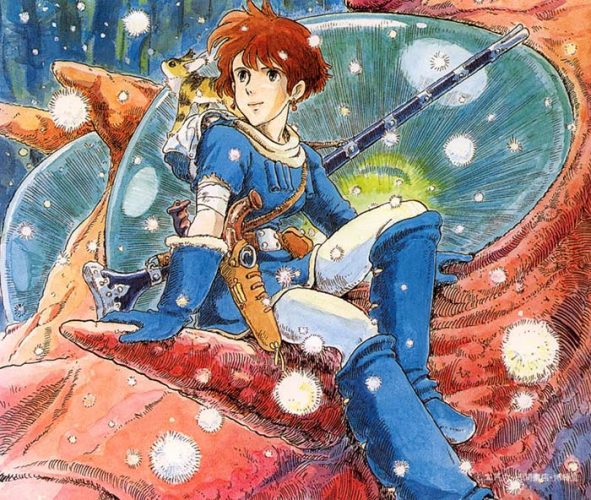
Anime is famous for being unorthodoxly expressive with its distinct style and storytelling, and how distinguishably creative it gets. On the other hand, it is also notorious for being criticized as animated porn and showcasing carnage and guts. We can’t deny that anime can go to such extremities, and of course, it is not fair to judge anime as a whole based on titles that feature such content. Beyond Pokémon, Dragon Ball, Hentai, or any anime stereotype, is anime more progressive than what people think? Let us tell you why we think so!
Culture Differences
With an article like this, we have to disclaim we’re not here to promote any kind of agenda, but to merely analyze and debunk some criticisms and to show examples as to how it is progressive. What’s considered liberal or conservative in one country, may not be considered so in another and there are varying degrees to what defines one or the other. For example, religion in government is considered a big thing in the US, while modern Japan is non-religious.
However, Japan is considered to be socially conservative to a certain extent, but there are qualities about it you wish you had in your own. Though this applies to bigger cities such as Tokyo, it has one of the best public transportation services in the world. As you can see in just about every anime that takes place in Tokyo, you often see characters riding the train to get somewhere like school. Yes, a good number of anime tend to spoof groping incidents that happen (like in the first episode of Hinomaruzumo) on crowded trains, but Hinomaru goes out of his way to help a victim. With victims (both men and women) now coming forward with their experiences thanks to the #MeToo movement, it’s nice to see in anime a young man will go out of his way to help because it’s the right thing to do (despite being portrayed comically). This one small instance shows how anime is more progressive than people give it credit for with the way society has been upon the drafting and uploading of this article.
Ghibli and Strong Female Characters
For starters, most of Studio Ghibli’s titles are rather progressive, probably more so than any other country’s animation industries. Both Princess Mononoke and Nausicaa not only feature strong female leads but educate its viewers about how we should take care of the environment. In Porco Rosso, let’s remember one of its most iconic lines, “I’d rather be a pig than be a fascist,” and Spirited Away is a criticism on modern consumerism. When you look into Hayao Miyazaki’s background, you can see why he likes to portray such themes.
Of course, Shoujo, most famously Sailor Moon, is probably one of the most empowering female characters in not just anime but to pop culture as a whole. Not only is she a superhero, she’s just someone who is trying to live an ordinary teenage life as she has to study, spend time with her friends and family, and have a relationship. She popularized school girl uniforms and as a brand, her supporting cast did so much for the fan base on an international scale than Naoko Takeuchi, the original creator, never anticipated, such as being an icon to the LGBTQ community.
Featuring LGBTQ characters
We have to admit that the portrayal of LGBTQ in anime is a rather interesting and complex issue. Though American comics and animation have recently explored such characters in their works due to changing attitudes in American society (with Nickelodeon’s Avatar series now featuring lesbian character), anime has a long history of portraying them beyond your standard Yaoi and Yuri.
In recent times, Yuri!!! on Ice has become one great example of anime representing gay romances. Through Yuri and Viktor’s relationship, audiences can authentically feel their relationship develop organically. It has a distinguishing way of portraying that their relationship is just like anyone else’s. It’s about building trust and support. It doesn’t really try to throw it in your face that they’re gay for the sake of it but because they express their feelings under circumstances when love counts the most, and that’s what makes their romance universally touching.
As for transsexuals, probably one of the most iconic transsexual characters in anime and manga has to be Nriko from Fushigi Yuugi. Though the definition has changed between now and then, Nuriko, to dedicated fans of the series, has been a big favorite. Of course in today’s world, there is an insistence that they be referred to by their preferred pronouns, but considering the times when Fushigi Yuugi debuted, it actually explores that complexity in an appropriate way in context to it. Even before and after Fushigi Yuugi, there have been a great number of gender fluid characters in anime. One notable example is Berg Katse in Gatchaman, which debuted in the 70s, and in recent times, we have Hange from Attack on Titan (according to Isayama, she’s gender fluid).
Final Thoughts

Due to Japan being a homogenous society, it’s naturally difficult to portray diversity when they have no experience with it, but it doesn’t mean it’s not capable of portraying discrimination. Elfen Lied does a very extreme job of portraying discrimination through the homunculi, and in both versions of Fullmetal Alchemist, we get to see how it applies to the Ishvalan refugees. Lastly, in Attack on Titan, it later deals with class warfare, and how walls are used to separate them in conjunction where the lower and higher classes are positioned. As you can see, anime is a lot more progressive than we may have assumed.
Recommended Post


